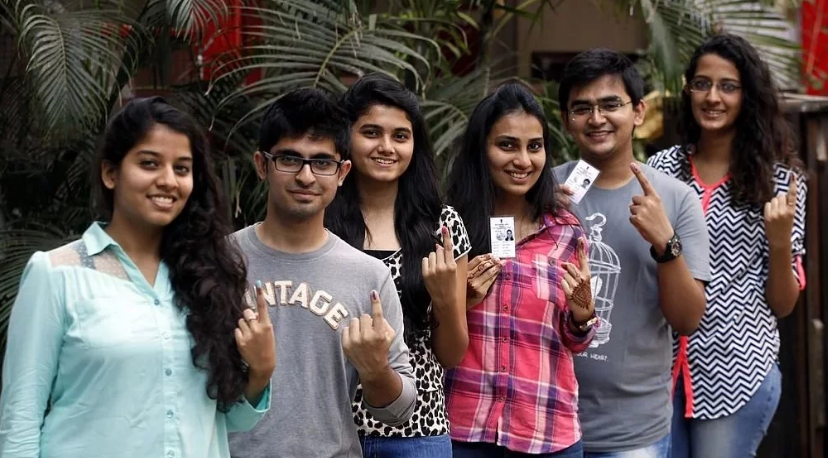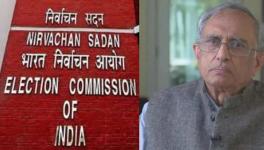Why 2014 Lok Sabha Result May be Difficult for BJP to Replicate

Will the undecided or what psephologists define as the “swing” voter, play a key role in deciding the electoral outcome of 2019? The feedback is that he/she may well spring a surprise and trump opinion pollsters by voting in a manner which is free from commitment to any one party, ideology or caste dynamic. This is exactly what happened in 2014 when Narendra Modi and the Bharatiya Janata Party (BJP) --thanks to support cutting across the social divide -- were elected to power with a landslide win.
But what if the reverse process is at work this time? The apprehension within the BJP is exactly that. The party fears that the undecided electorate, which had voted for change in 2014, may only support the BJP if it is sufficiently satisfied with the party’s performance in government. In other words, in the absence of any magic gamechanger or a ‘Modi wave’, the BJP, like any other party completing its term in office, must combat anti-incumbency to retain the support it enjoyed when it was voted in.
And that may not be easy, given the government’s poor track record in handling issues, such as corruption, unemployment, farm distress and the economic downturn. Also, the pain caused by ill-advised policies like demonetisation and goods and services tax (GST) can no longer be masked with the help of twisted rhetoric and manipulated statistics. The results are there for voters to see. In short, the BJP, this time, is without a USP (unique selling proposition).
Even optimists within the saffron party no longer espy a sweep—something they fancied when Pulwama-Balakot happened in February and brought with it the mirage of security and nationalism emerging as electoral trump cards that would seal a landslide win. Since then, the euphoria has died.
The February 14 terrorist attack on a CRPF convoy at Pulwama, on the Srinagar-Jammu highway, which killed over 40 men, is now seen as a serious security lapse that rendered our jawans vulnerable. And India’s retaliatory air strike on a militant training camp at Balakot, across the Line of Control on February 26, has subsequently been questioned in several quarters for not being as muscular and destructive as it was trumpeted to be.
In fact, almost as if to end weeks of controversy about the number of casualties inflicted by the strike -- it ranged from 250 to 400 killed depending on who in the government you sought this information from--Union External Affairs Minister Sushma Swaraj reportedly came clean on April 18 while addressing BJP women workers in Ahmedabad. She confirmed what the world was telling us all along that “no Pakistani soldier or civilian died” in the Balakot air strike.
With feedback from the ground confirming that Pulwama-Balakot has had limited impact as a pan-India issue, the ball is back in the undecided voter’s court. He/she may not be easily swayed as in 2014 when Narendra Modi seemed to be the answer for all ills. In the build up to elections, he had dominated the political space. And it was Modi, the symbol of change, that the floating and undecided electorate plumped for, not necessarily the BJP as a party.
In a quasi-presidential campaign, Modi successfully projected himself as the leader who would root out corruption, inject new life into the economy and make inclusive growth a reality. He was backed in his mission by a section of ‘liberal intellectuals’ who said he should be given a chance and not judged by the 2002 Gujarat riots alone. They assured us that Modi would grow into a moderate and tolerant leader. Ironically, many of them are today his strident critics.
In his study, Interpreting the Electoral Verdict of 2014 Lok Sabha Elections in India, Sanjay Kumar, director of Delhi-based Centre for Studies in Developing Studies (CSDS), makes this pertinent point about the floating, undecided voter and his/her role in the 2014 outcome : “Findings of the survey conducted by the CSDS indicate only a tiny proportion of voters seem to identify closely with one or the other political party, so there is hardly any question of party identification being the dominant theory of voting to describe how Indians voted during the 2014 Lok Sabha elections.”
That is why the 2014 result may be difficult for BJP to replicate. In fact, there is a question mark on whether the 31.54% who voted Modi five years ago will still repose the same faith in him. Remember, the vote share surge of the saffron party from a low of 18.80% in 2009 to a phenomenal increase by 12.54% in 2014 was primarily due to three factors: anti-incumbency working against Congress; a convincing campaign by Modi promising good governance; successful wooing of first-time voters and luring the large floating electorate-- not committed to any party--to the saffron fold.
The mandate then was for change. The intense public displeasure with the outgoing UPA-II dispensation was what Modi cashed in on. He was helped by the fact that mis-governance and mega scams---real or exaggerated---of the Manmohan Singh government had dominated the media space for well over three years. Not a day passed without frauds running into thousands of crores being exposed. The Opposition as well as sections of civil society also joined hands in the campaign against corruption. But their narrative was cleverly appropriated and hijacked in no time by one man--Narendra Modi.
Given the success of 2014, the BJP has been trying to posit this election as a Modi vs the rest battle. But insiders fear that this may not be the construct in the mind of voters. Many of those who voted the BJP five years ago, may also like to look at Modi through the prism of performance. For them the saffron party’s commitment to Hindutva or building the Ram Mandir may not be an issue. It is such voters who might hold the key this time to who wins or loses, and by what margin.
Much of the ‘Modi magic’ in 2014 also revolved around hard-selling his candidature as a suitable Prime Minister and luring young first-time voters. A research paper by Deepankar Basu and Kartik Misra of the University of Massachusetts, Amherst, titled BJP’s Demographic Dividend in the 2014 General Elections: An Empirical Analysis is revealing. Based on data from the 2001 Census and the Election Commission, they arrived at 120.53 million as the number of first-time young voters in 2014. That was a good 14.47% of the total electorate.
This time 52.6 million more first-timers will be added to the voters list. However, unlike 2014, when a high-voltage campaign, designed by Madison World, targeting young voters was launched months before the elections, BJP’s campaign in 2019 has been diffused and divided with the defence of Modi’s governance also requiring considerable focus. In 2014, Modi was projected as the hope. Now he must also be sold as a Prime Minister who delivered—a far more daunting task for his PR (public relations) managers.
Also, there are concerns about how far BJP has grown in the last five years. In 2014, its tally of 282 seats comprised 194 from just six states-- Bihar, Gujarat, Madhya Pradesh, Maharashtra, Rajasthan, and Uttar Pradesh. A repeat performance of near-total domination in these six states may be unlikely. In the five southern states and one Union territory-- Andhra Pradesh, Telangana, Tamil Nadu, Karnataka, Kerala and Puducherry—which account for 130 seats—the saffron party can at best expect only marginal gains. The same is the story in Bengal and the North East.
All this leaves enough room for uncertainty. Even if the BJP secures the same vote share that it did in 2014, there is no guarantee that it will be concentrated in a few large Northern states ensuring that the party wins maximum seats there. A diffused support base may not translate favourably into number of seats won.
Right now, the BJP is banking on a divided Opposition vote to help it pull through. But in a closely fought election one can never tell. Which is why first-timers and the undecided voter may have an impact on the eventual outcome. Hope floats on which way they swing.
The writer is senior journalist and author based in Delhi. The views are personal.
Get the latest reports & analysis with people's perspective on Protests, movements & deep analytical videos, discussions of the current affairs in your Telegram app. Subscribe to NewsClick's Telegram channel & get Real-Time updates on stories, as they get published on our website.
























